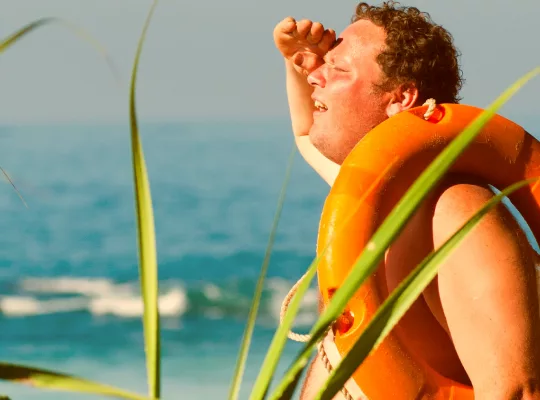Every year, hundreds of thousands of people experience sudden cardiac arrest. Whether it’s at home, at work, or in public, most of these emergencies happen far from immediate medical help. In those first crucial minutes, the difference between life and death often comes down to one thing:
👉 Does someone nearby know CPR?
Why Learning CPR Matters
More than 350,000 cardiac arrests happen outside of hospitals in the U.S. each year—most of them at home. Yet despite this, nearly 70% of Americans don’t feel prepared to help during a cardiac emergency.
That’s not just a skill gap—it’s a life-saving opportunity being missed every day.
Administering CPR immediately can double or even triple a person’s chance of survival by keeping oxygen flowing to the brain and vital organs until emergency responders arrive. Without CPR, brain damage can begin in as little as 4 to 6 minutes.
A Week Dedicated to CPR Awareness
Because of how critical this life-saving skill is, there’s even a dedicated national observance:
National CPR & AED Awareness Week, held every year from June 1–7.
This week is designed to raise awareness about the importance of CPR and AED training, encourage people to get certified, and spotlight stories of everyday heroes who have made a difference.
But CPR awareness shouldn’t be limited to one week. The skills you learn today could save a life any day of the year.
What You’ll Learn in CPR Certification Classes
CPR training goes far beyond watching a video or reading a flyer. In a proper CPR and First Aid certification course—like those offered by the American Red Cross—you’ll gain essential, practical skills:
✅ CPR Hand Placement
Correct hand placement is vital for effective chest compressions:
-
Adults: Center of the chest using two hands
-
Children: One or two hands depending on age/size
-
Infants: Two fingers below the nipple line
✅ CPR Compression Rates and Depths
Learn how fast and how deep to compress:
-
100–120 beats per minute
-
2+ inches deep for adults, ~2 inches for children, and 1.5 inches for infants
✅ Compression-to-Breath Ratios
-
30:2 compressions to breaths for adults
-
15:2 for two-person CPR with infants or children
✅ AED Training
Learn how to use an Automated External Defibrillator (AED)—a portable device that can restart a person’s heart in cardiac arrest.
Online vs. In-Person CPR Training: Why Hands-On Experience Counts
Today, you can take CPR classes online, in person, or in hybrid formats. But while online classes are a convenient way to learn the theory, nothing replaces the hands-on experience of an in-person session.
Why In-Person Training Is Better
When you attend in person, you practice on CPR manikins (dummies) that simulate the resistance of a real chest. You’ll get the feel for:
-
The correct pressure to apply
-
Chest recoil
-
Proper hand positioning
-
Real-time feedback from instructors
Until you’ve practiced on a manikin, CPR remains just a theory. Physical experience builds confidence, readiness, and real-world effectiveness.
For the best learning outcome, choose a class that offers live practice and instructor-led coaching.
Real Life: CPR Saves a Life on the Job Site
In Pensacola, Florida, a man named Ron Jeske collapsed at a job site, completely unconscious and not breathing.
His coworker, Zack Floyd, a U.S. Army veteran trained in American Red Cross CPR, didn’t panic. He:
-
Checked for vitals — no pulse
-
Started chest compressions and rescue breaths
-
Kept going until Jeske started breathing again—on the 15th compression
“I wouldn’t be here talking to you today if he wasn’t,” Jeske later said.
Zack’s fast response earned him a nomination for the American Red Cross Certificate of Merit, the organization’s highest award.
And Across the Pond: A Bus Driver Saves a Stranger
In Peterborough, UK, bus driver Paul McCarthy helped save a man who collapsed outside his bus with chest pain.
Paul, trained in first aid, put the man in the recovery position, then began CPR when the man stopped breathing. Paramedics arrived soon after, and the man survived.
For his calm, decisive actions, Paul received the Mick Capper Award from his company. His training—and his courage—made all the difference.
CPR Certification Is for Everyone (and Needs Renewal)
Whether you’re a parent, coach, coworker, or simply someone who wants to help, CPR certification is for you.
And if you’ve been certified before—don’t forget:
Most CPR certifications expire after two years.
Regular recertification keeps your skills sharp, updates you on changes in guidelines, and ensures you’re ready to act.
How to Get Started Today
Learning CPR is easier than ever—and could make you the reason someone survives.
✅ Find a CPR Class Near You
Visit Red Cross CPR Classes or search “CPR certification near me.”
✅ Choose In-Person if Possible
Maximize your skills with hands-on practice using CPR manikins and instructor feedback.
✅ Stay Prepared
Stock a CPR & AED kit for your car, home, or workplace.
✅ Share What You Learn
Encourage your family, coworkers, or local community to take a class with you.
Final Thoughts: Be the Person Who Knows What to Do
Whether you’re at work, home, or on the go, emergencies don’t wait for paramedics Be able to act.
With CPR training, you can be the one who steps up, acts fast, and saves a life.




